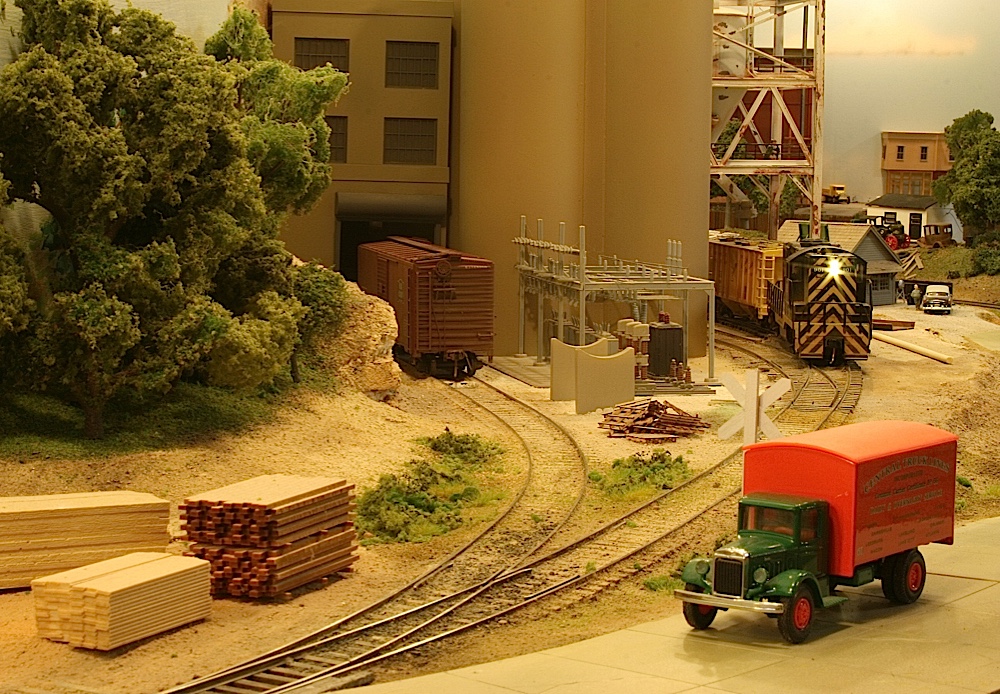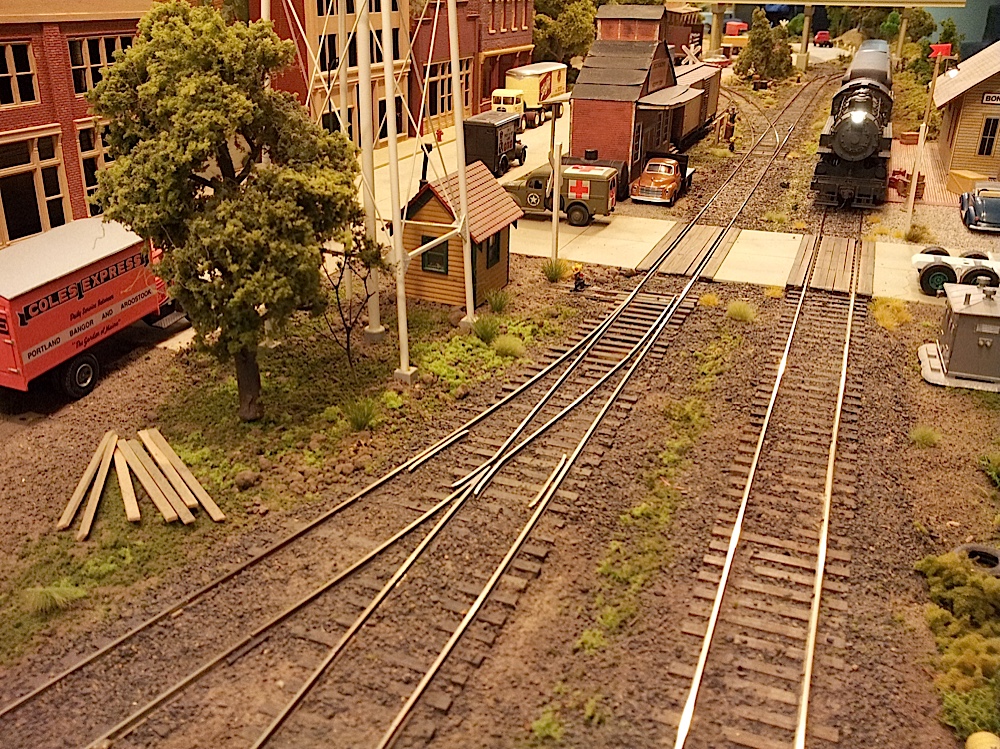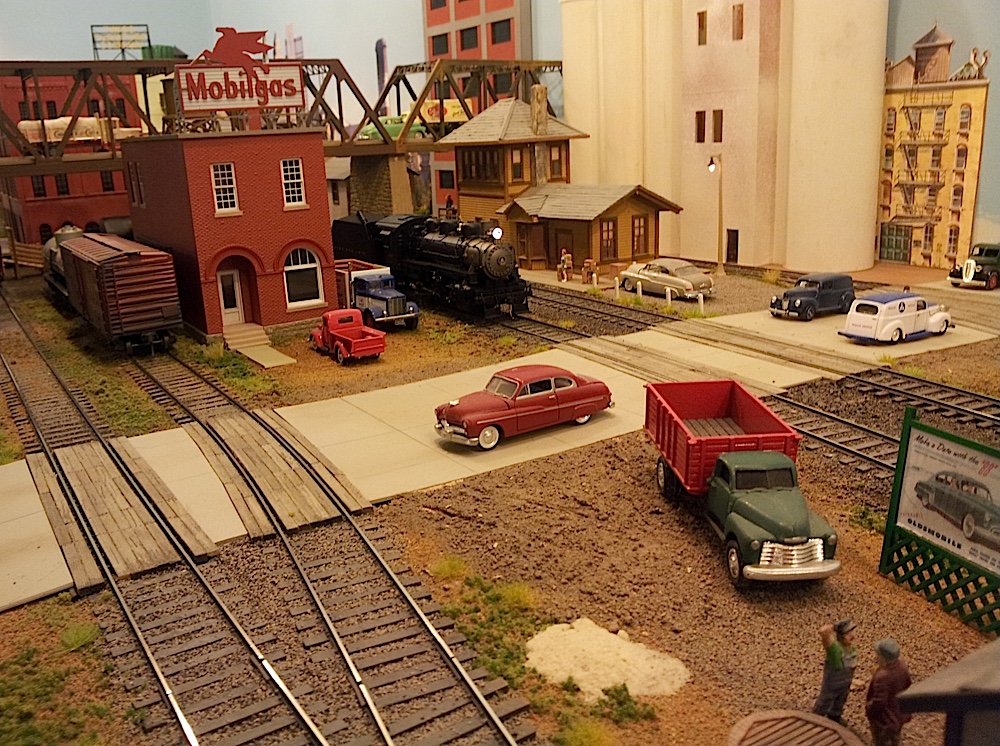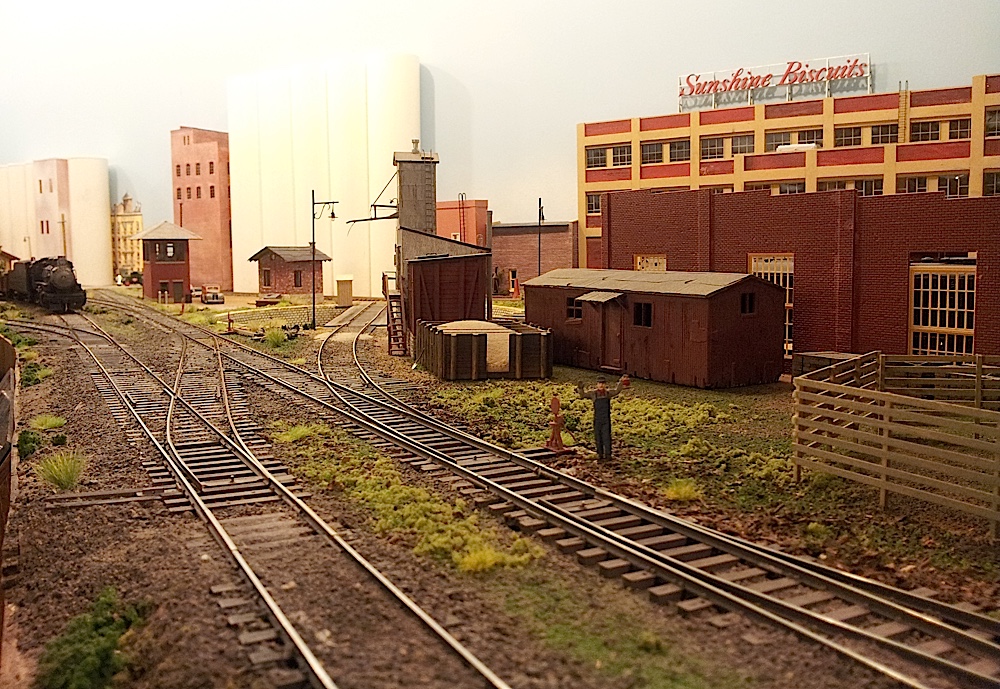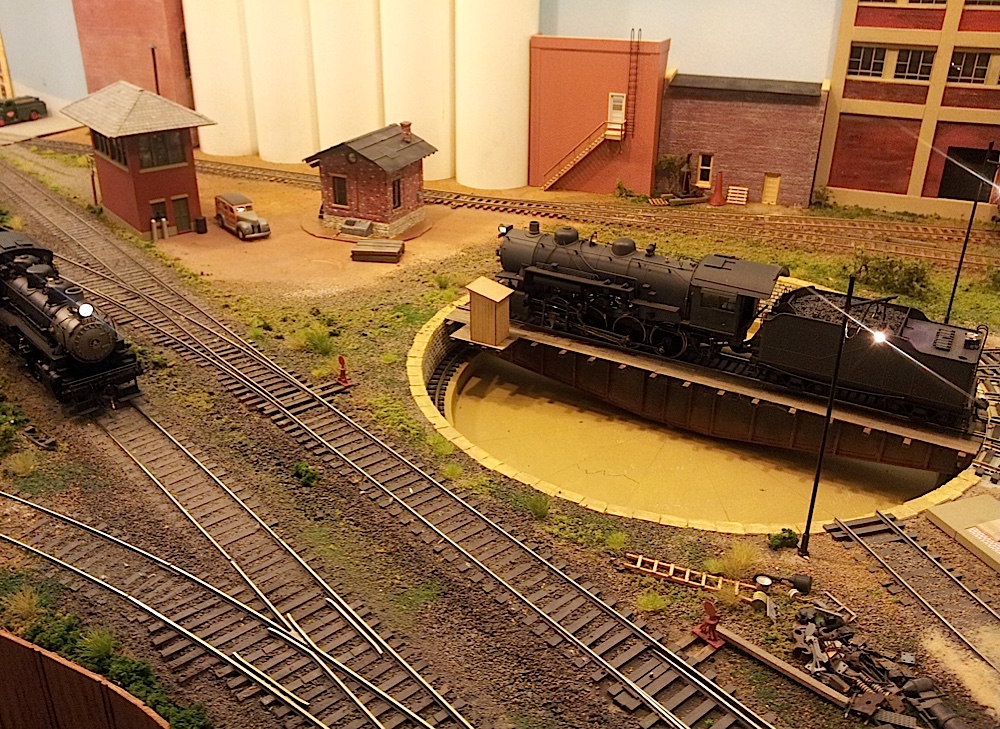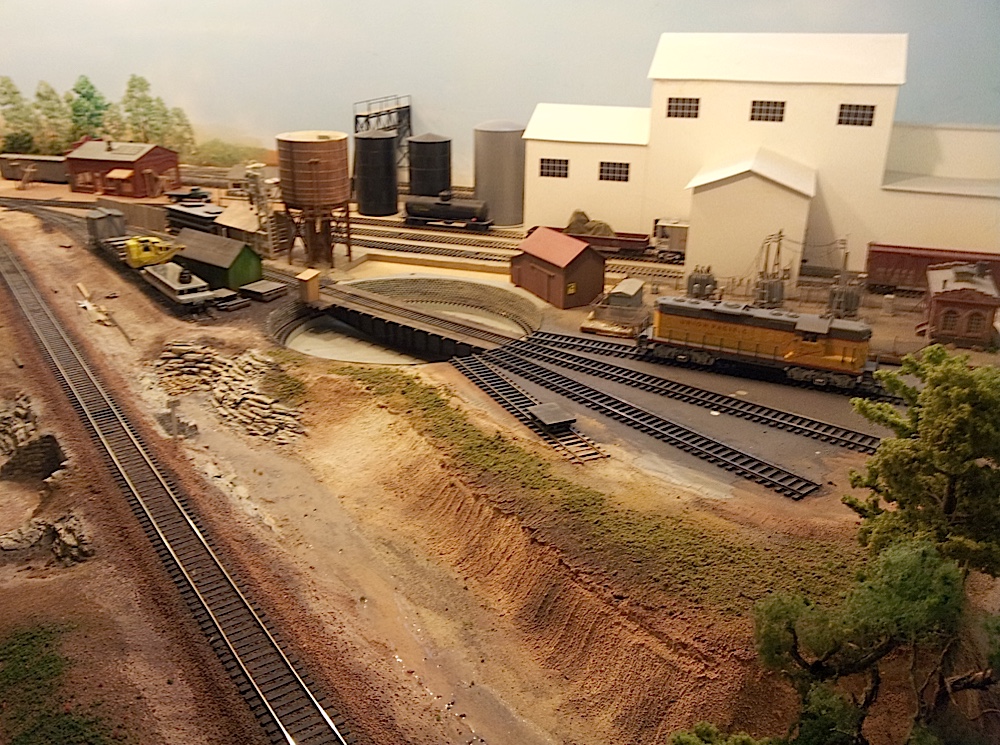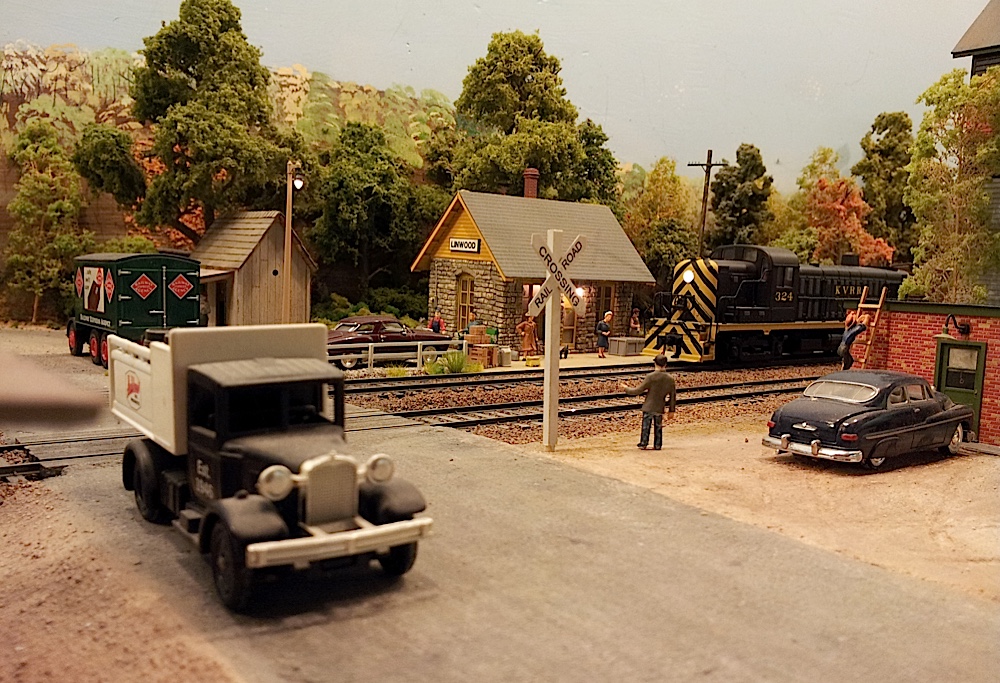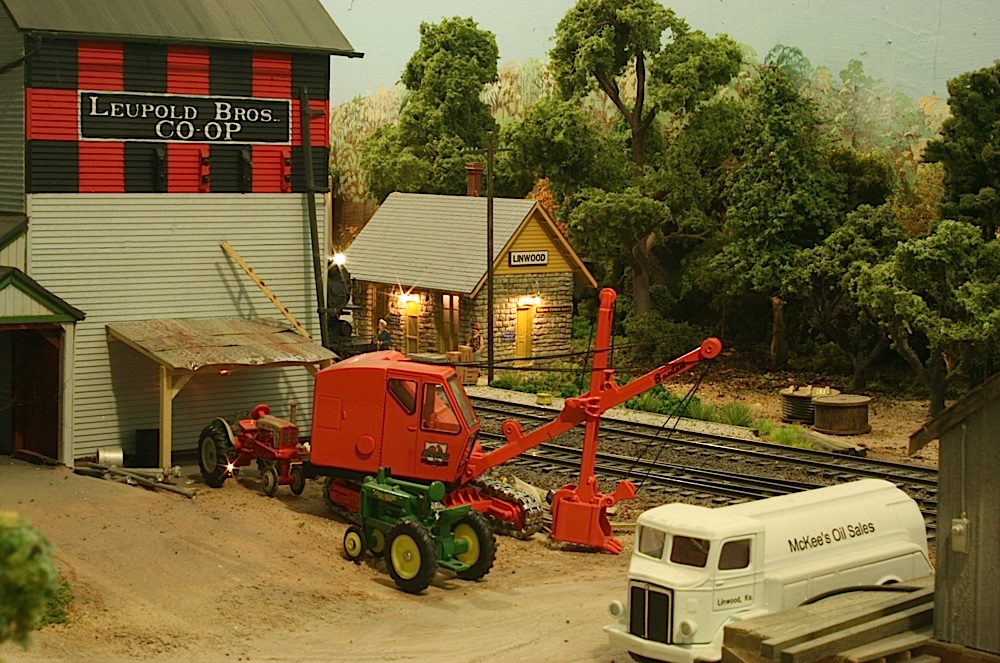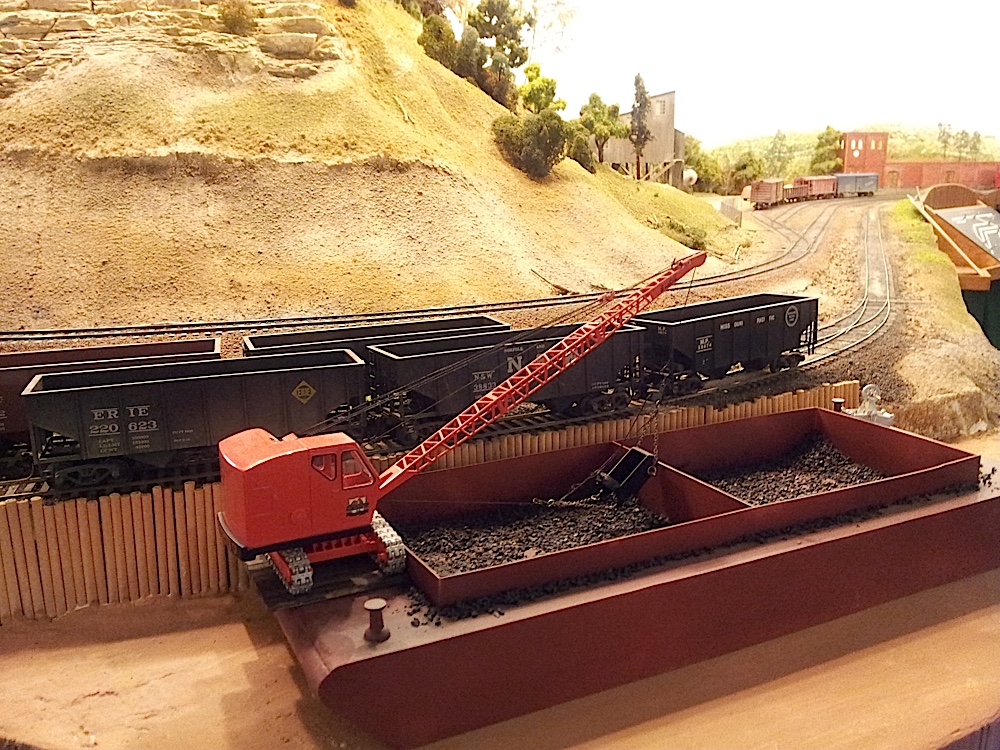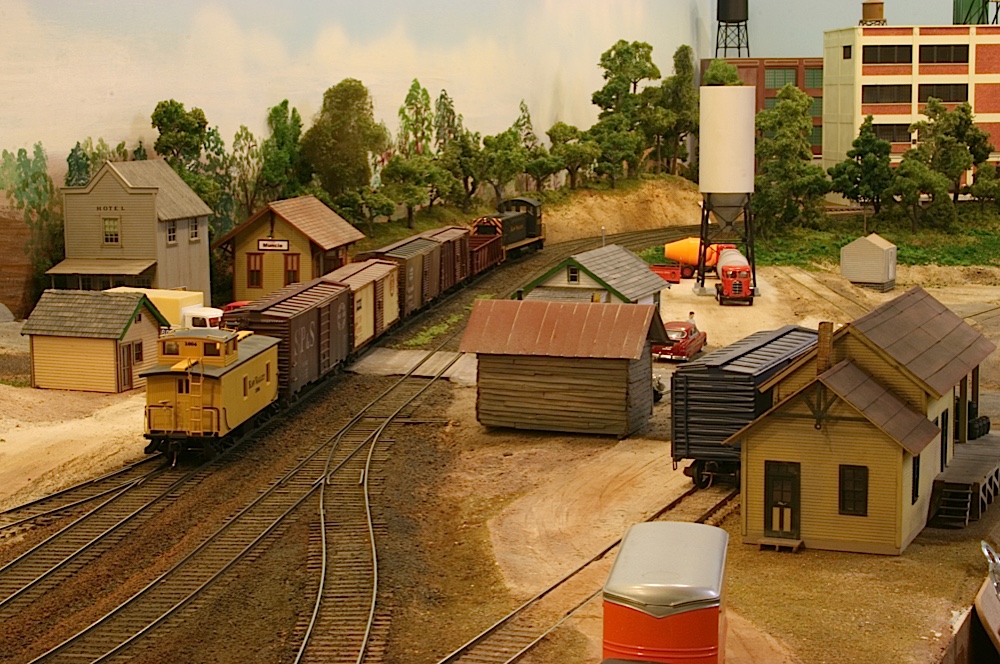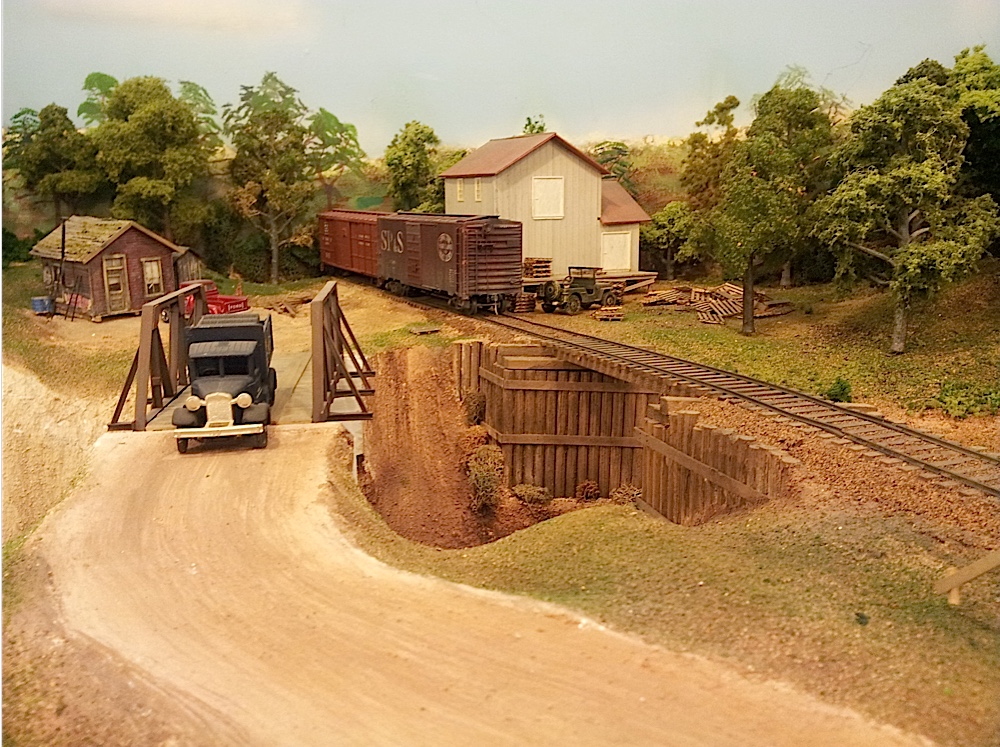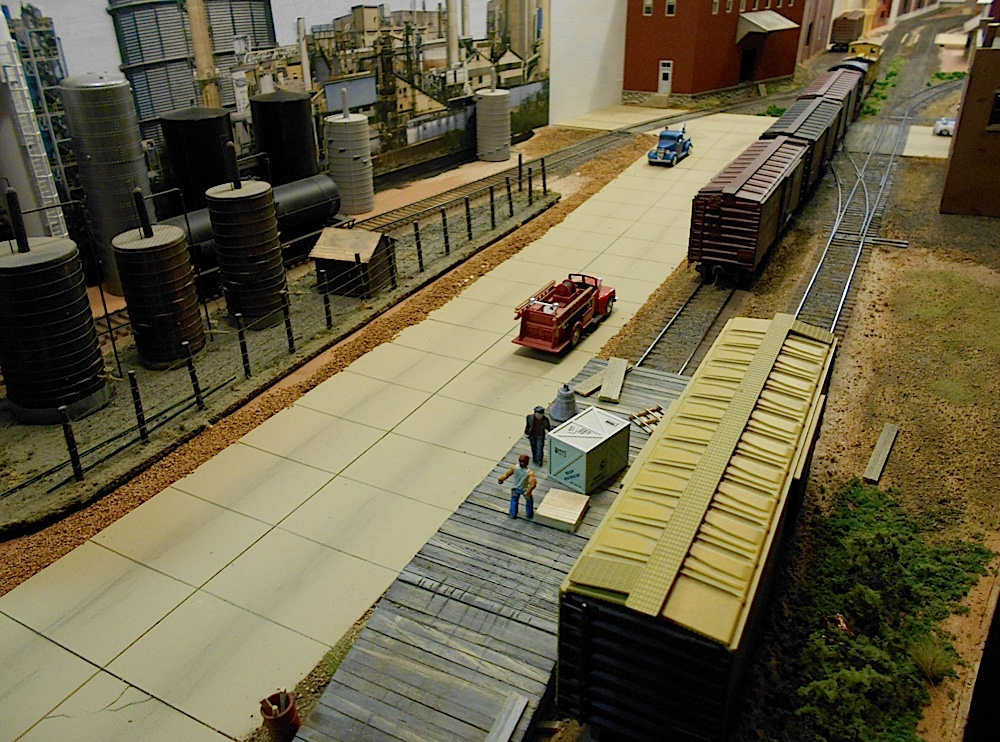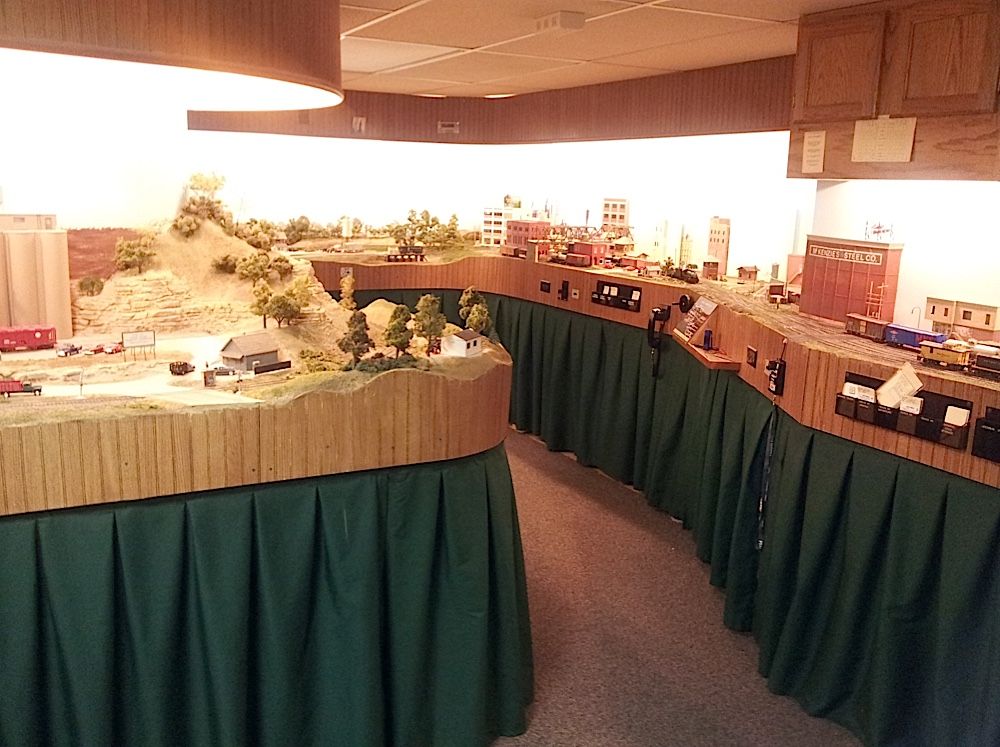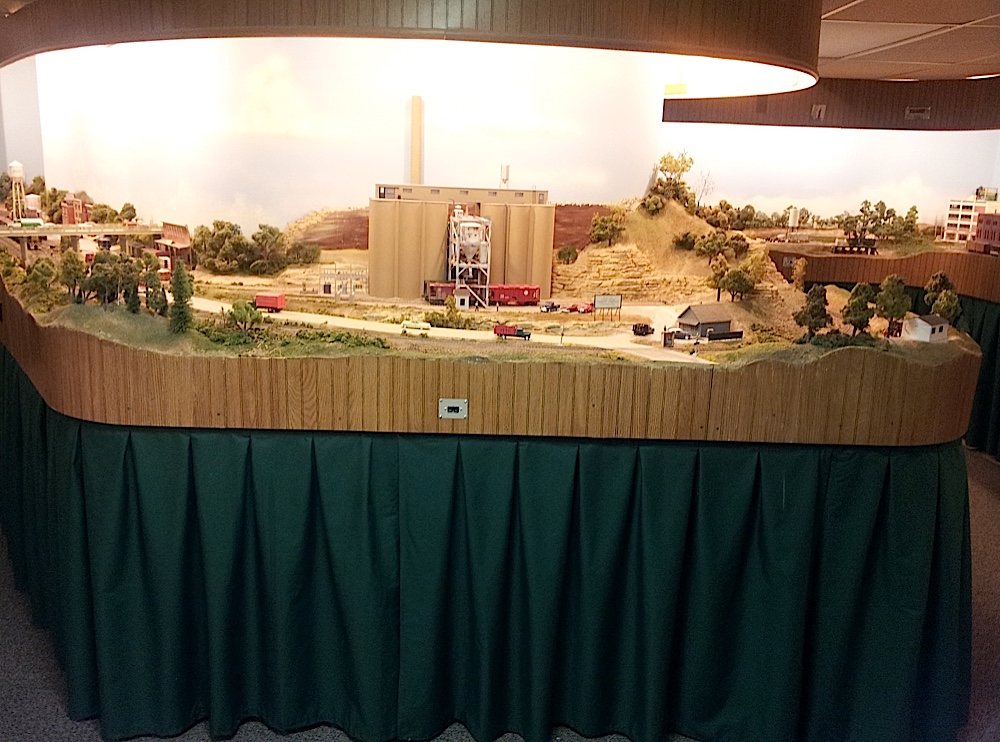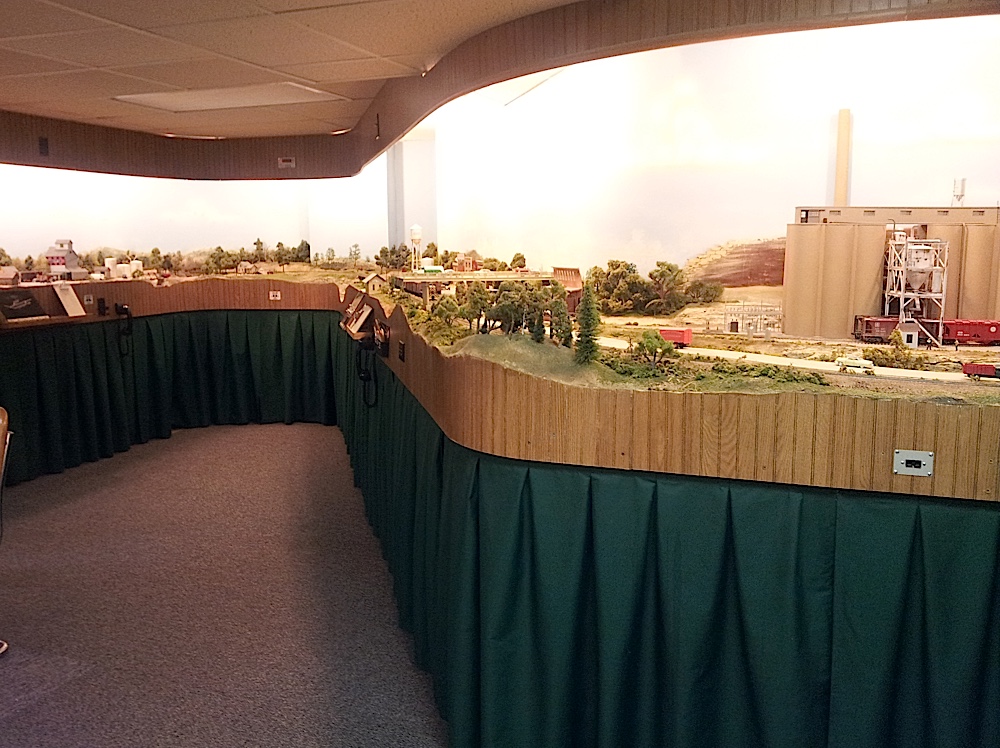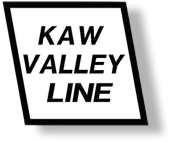
Mike Fyten’s Kaw Valley Railroad
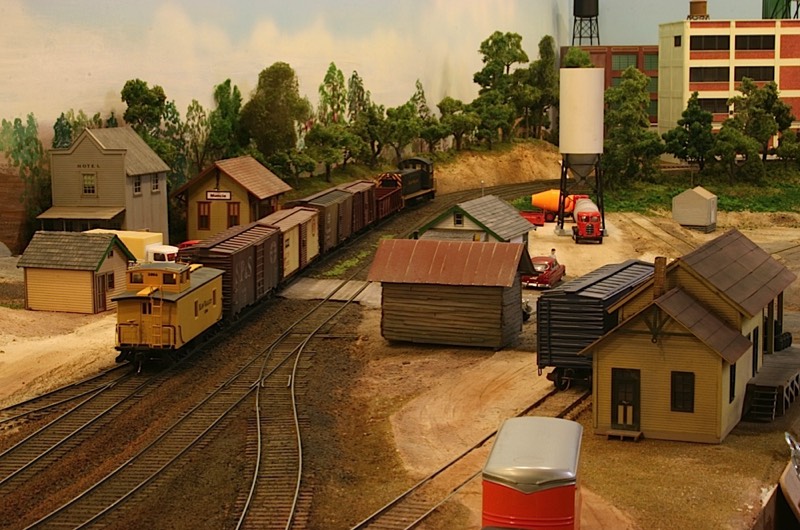

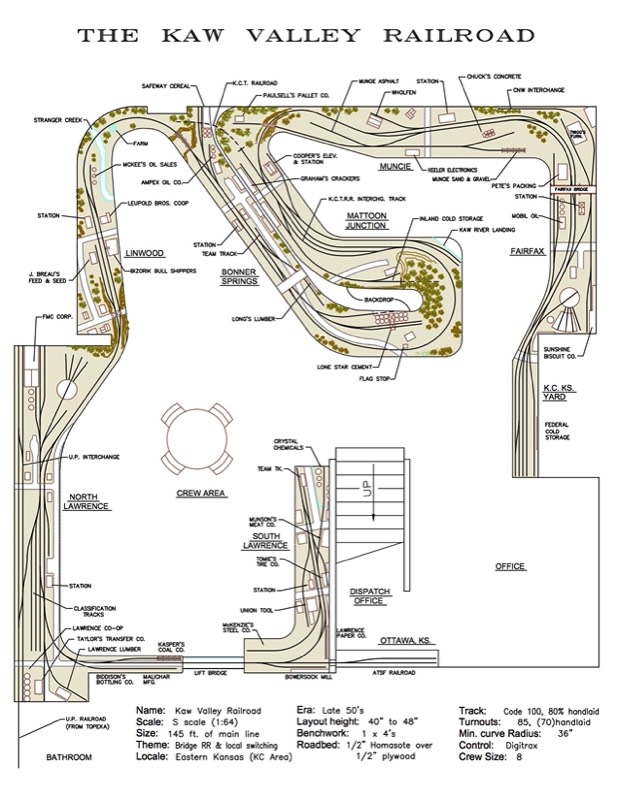
Track Plan
click to embiggen
The Kaw Valley Railroad is loosely based on a railroad named the Kansas City, Kaw Valley and Western Railroad. It was often referred to as the Kaw lines or Kaw Valley Railroad. The original line was an inter-urban traction railroad that ran from Kansas City, Kansas to Lawrence, Kansas.
Presently, the Kaw Valley has 10 engines and a burro’s crane. There are five steam engines and five early diesels. All the engines are equipped with Tsunami decoders and sound. I use the Digitrax Control System.
The layout is divided into five districts. The UP, CNW and the A.T.S.F. railroads each have their own engines.
There are about 115 freight cars on the layout and about two-thirds of them get moved during a session. We use the car card and way-bill system to forward and return cars.
Being a small railroad, I decided early on, that I would limit the car lengths to no more than 40 footers.
Presently, the Kaw Valley has 10 engines and a burro’s crane. There are five steam engines and five early diesels. All the engines are equipped with Tsunami decoders and sound. I use the Digitrax Control System.
The layout is divided into five districts. The UP, CNW and the A.T.S.F. railroads each have their own engines.
There are about 115 freight cars on the layout and about two-thirds of them get moved during a session. We use the car card and way-bill system to forward and return cars.
Being a small railroad, I decided early on, that I would limit the car lengths to no more than 40 footers.
This Layout was featured in the March 2017 issue of Railroad Model Craftsman*
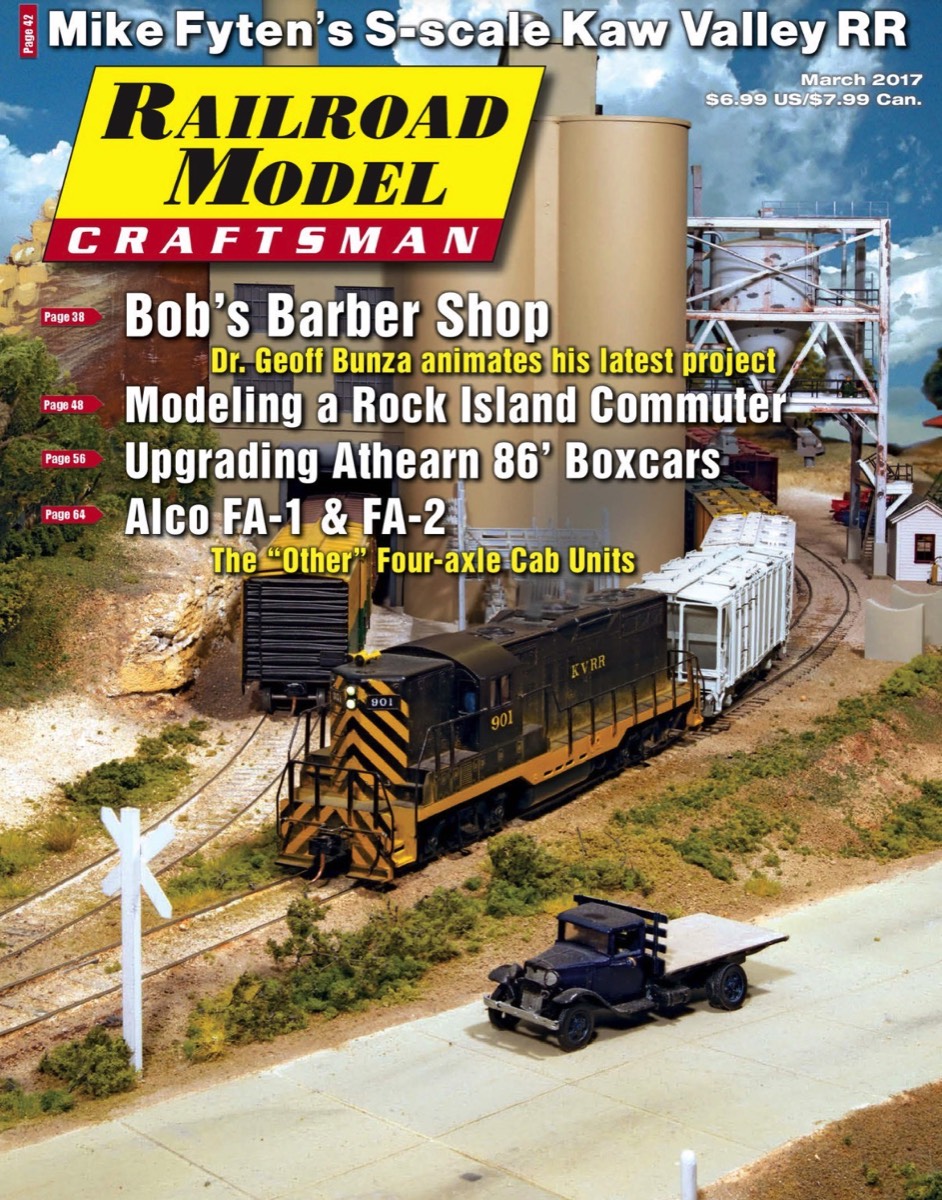
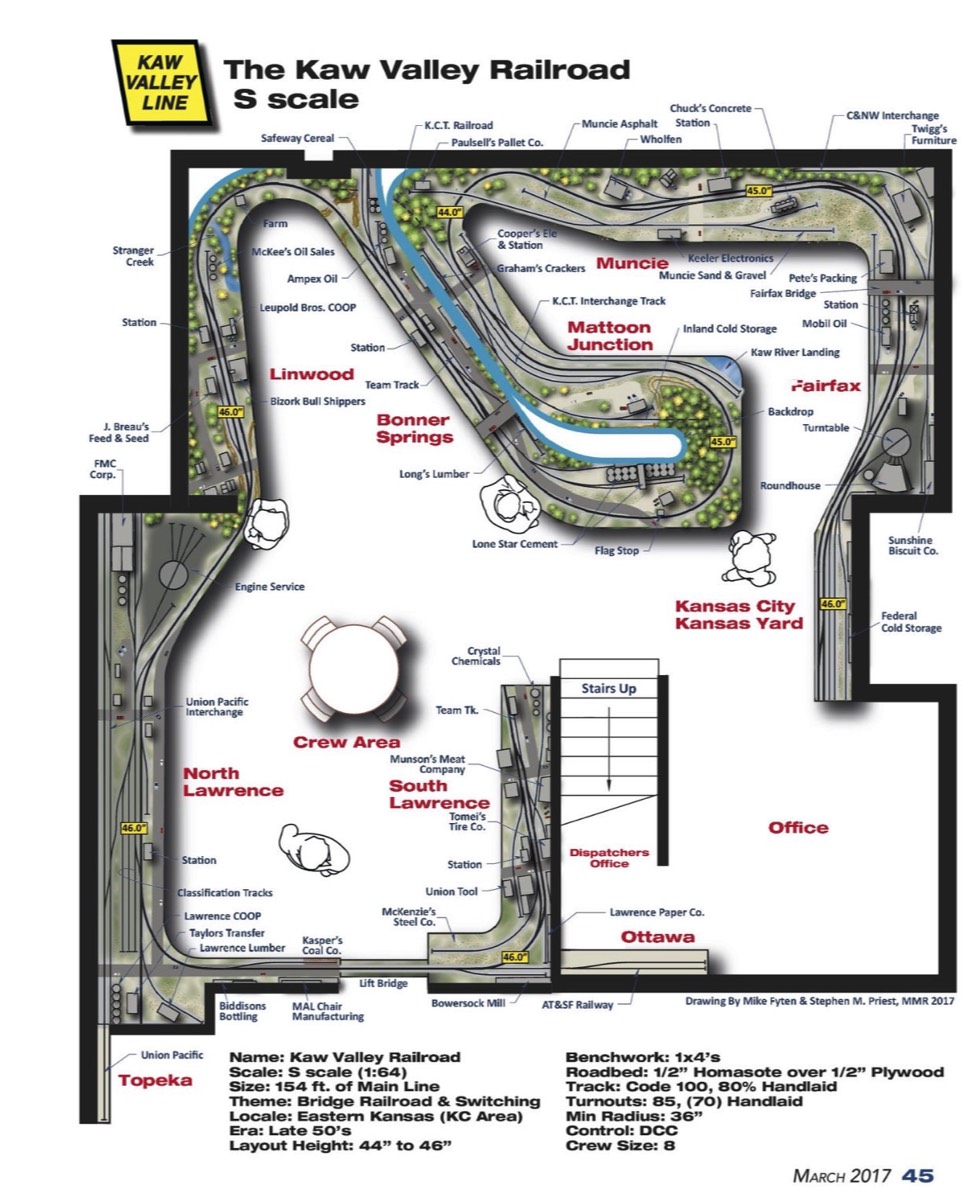
* Permission to use images obtained by publisher
Layout at a Glance
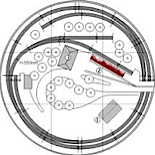
Layout at a glance
- S Scale
- Approx. 30 ft x 30 ft.
- Kansas City Kaw Valley & Western
- Eastern Kansas
- Walk around
- Main line run 140 ft.
- Height 46”
- Scenery about 70% complete
- Digitrax
- Basement stairs access
- Card car and way bills
- Timetable and Train Orders
- 8 operators – 1 dispatcher, 2 yard masters, 2 transfer crews, 3 road crews
Jobs on the Layout
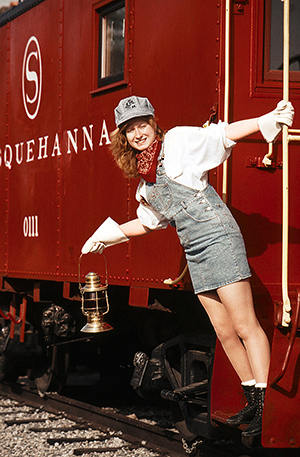
Jobs on the Layout
It takes about 7 to 8 people to operate the layout – 1 dispatcher, 2 yard jobs and 5 man crews. The KV has a gas-electric that runs four times a day between KC and Lawrence. Also a mixed freight that runs twice a day between Ottawa and Kansas City.
There are 6 - 8 extras that run during the session. We also interchange with the UP in Lawrence, the CNW in Kansas City and the Santa Fe that comes up from Ottawa, KS.
Our typical train consists of an engine, 6 cars and a caboose.
I use time table and train orders to run the layout. If you want to try your hand in dispatching, I’ve been told that this is the railroad to learn on.
Much like the real railroads, the KV is a point-to-point layout. There are turn tables at each end for turning the locomotives.
There are 6 - 8 extras that run during the session. We also interchange with the UP in Lawrence, the CNW in Kansas City and the Santa Fe that comes up from Ottawa, KS.
Our typical train consists of an engine, 6 cars and a caboose.
I use time table and train orders to run the layout. If you want to try your hand in dispatching, I’ve been told that this is the railroad to learn on.
Much like the real railroads, the KV is a point-to-point layout. There are turn tables at each end for turning the locomotives.
About the Layout Owner
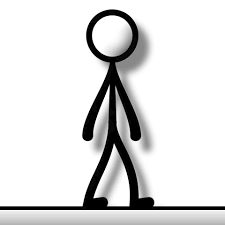
About the Layout Owner
Insert text here
More about the Layout
More About the Layout
There are several major industries on the layout, that the Kaw Valley services. Most importantly is the Lone Star Cement Plant just outside of Bonner Springs. Typically, 6 to 8 cars are switched at the plant during an op session. Lone Star ships cars all over the mid-west.
All total, there are 41 industries on the layout not counting the yards and interchange tracks. Each one can handle anywhere from 2 to 10 freight cars. The railroad was design for short trains and switching operations. Most of the track and turnouts are hand laid.
You’ll find code 70, 83, and 100 on the layout. All turnouts are remote-controlled from panels on the fascia.
We use a fast clock during operating sessions, and a 4:1 clock gives us a 3 hour operating session.
All total, there are 41 industries on the layout not counting the yards and interchange tracks. Each one can handle anywhere from 2 to 10 freight cars. The railroad was design for short trains and switching operations. Most of the track and turnouts are hand laid.
You’ll find code 70, 83, and 100 on the layout. All turnouts are remote-controlled from panels on the fascia.
We use a fast clock during operating sessions, and a 4:1 clock gives us a 3 hour operating session.
Photo Gallery
The Little Railroad That Could (and did!)
The revised story of the Kansas City, Kaw Valley, and Western Railroad
As early as 1900, give or take a year or two, a fellow by the name of John W. McDaniel had a dream of an interurban track line connecting Bonner springs (where he lived) and Kansas City, Kansas. He felt that the one or two daily passenger pick-ups to Kansas City by Union Pacific weren’t enough if Bonner Springs was to grow and prosper.
By 1904, construction had begun, but lack of funding, kept the railroad from going foreword. It wasn’t until 1916 that the railroad managed to acquire the right-of-way and financing to build the line from Kansas City to Lawrence Kansas. At last, passenger service from K.C. Ks. to Lawrence was scheduled with hopes of continuing the line to Topeka, the capitol of Kansas.
The little railroad (only 37 miles long) did prosper, but was always in debt. The Great Depression of the 1930’s almost ruined the line. By that time the Kaw Valley had eliminated its passenger service and replaced its revenue with freight hauling.
In 1951, the two cities of Lawrence and North Lawrence joined to become one city. Because the Kaw Valley was no longer carrying passengers, the city told the KV to remove its tracks from the city’s roads. Because of poor financial condition, the KV had to abandon the line from Bonner Springs to Lawrence.
In 1960, the state wanted to widen highway 32 from Bonner Springs to Lawrence, taking part of the right-of-way of the little line from Kansas City to Bonner. Enough was enough, and the Kaw Valley ceased operations in August of 1961. In the 1960’s there was a young entrepreneur who had a vision of building just such a railroad. Lack of funding and space required that the rebirth of the line would have to wait. None the less, it did not deter his dream of a line that would serve the small mom and pop businesses that sodesperately needed rail services to the big cities. It wasn’t until 1992 (31 years later) the financing and the acquired right-of-way was secured and re-construction began on the Kaw Valley.
When construction started, the only tangible assets were old pictures and newspaper articles. There were a few old timers that knew the history of the little line and the new owner would have to rely on them to fill in the gaps. Long gone were the over-head trolley lines. The owner wanted desperately to electrify the line, but the electric motor cars went the way of the steam engines. Diesel power would have to do. It was important that the line should once again have passenger service. A critical piece of the railroad was to get contracts with the adjacent railroads for interchange service. No small task for a fledging little line.
Today, after years of construction, the Kaw Valley is once again a model railroad serving large and small industries along the line. Working closely with the Union Pacific, Santa Fe and Chicago-Northwestern, the line has achieved status with other small railroads throughout the United States.
But wait, hold your horses, stop right there, and just what are we talking about? Didn’t the new owner want to rebuild the line, not build a new one? Well, let’s go back before the line ceased operations, say about 1957. Let’s add some new equipment to the railroad. And, what would have happened if the cities and the state had not chipped away at the little line? Surely new industries would have moved out to the middle of no-where just because there was a railroad to serve them. And I know for a fact that a lot of people would not have bought cars because they had (light?) rail service. Ah, the good old days. Why can’t history be the way we want it to be?
Is there anything we can we do to change history? You bet! And it’s really quite simple…rewrite it!
By 1904, construction had begun, but lack of funding, kept the railroad from going foreword. It wasn’t until 1916 that the railroad managed to acquire the right-of-way and financing to build the line from Kansas City to Lawrence Kansas. At last, passenger service from K.C. Ks. to Lawrence was scheduled with hopes of continuing the line to Topeka, the capitol of Kansas.
The little railroad (only 37 miles long) did prosper, but was always in debt. The Great Depression of the 1930’s almost ruined the line. By that time the Kaw Valley had eliminated its passenger service and replaced its revenue with freight hauling.
In 1951, the two cities of Lawrence and North Lawrence joined to become one city. Because the Kaw Valley was no longer carrying passengers, the city told the KV to remove its tracks from the city’s roads. Because of poor financial condition, the KV had to abandon the line from Bonner Springs to Lawrence.
In 1960, the state wanted to widen highway 32 from Bonner Springs to Lawrence, taking part of the right-of-way of the little line from Kansas City to Bonner. Enough was enough, and the Kaw Valley ceased operations in August of 1961. In the 1960’s there was a young entrepreneur who had a vision of building just such a railroad. Lack of funding and space required that the rebirth of the line would have to wait. None the less, it did not deter his dream of a line that would serve the small mom and pop businesses that sodesperately needed rail services to the big cities. It wasn’t until 1992 (31 years later) the financing and the acquired right-of-way was secured and re-construction began on the Kaw Valley.
When construction started, the only tangible assets were old pictures and newspaper articles. There were a few old timers that knew the history of the little line and the new owner would have to rely on them to fill in the gaps. Long gone were the over-head trolley lines. The owner wanted desperately to electrify the line, but the electric motor cars went the way of the steam engines. Diesel power would have to do. It was important that the line should once again have passenger service. A critical piece of the railroad was to get contracts with the adjacent railroads for interchange service. No small task for a fledging little line.
Today, after years of construction, the Kaw Valley is once again a model railroad serving large and small industries along the line. Working closely with the Union Pacific, Santa Fe and Chicago-Northwestern, the line has achieved status with other small railroads throughout the United States.
But wait, hold your horses, stop right there, and just what are we talking about? Didn’t the new owner want to rebuild the line, not build a new one? Well, let’s go back before the line ceased operations, say about 1957. Let’s add some new equipment to the railroad. And, what would have happened if the cities and the state had not chipped away at the little line? Surely new industries would have moved out to the middle of no-where just because there was a railroad to serve them. And I know for a fact that a lot of people would not have bought cars because they had (light?) rail service. Ah, the good old days. Why can’t history be the way we want it to be?
Is there anything we can we do to change history? You bet! And it’s really quite simple…rewrite it!

